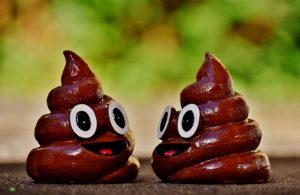
All Stools Are Not Created Equally
Go ahead and laugh!!! But let’s face the facts. Millions of people suffer from variety of colon problems. Some of these problems are merely inconvenient, some are painful, and some are deadly. Millions of other people will eventually have colon problem. So colon health should be a concern of everyone and one of the best indications or colon function is to be found in the nature of the stools that each of us produce.
What does a “a healthy stool” look like? The answer surprises most people. A truly healthy individual, with a truly healthy colon, eating the foods we were meant to eat, produce a stool that is typically a medium brown color. 1-1.5 inches in diameter, 6 inches long, well formed, almost odorless and moves through the anal passage without any straining.
You might see such a stool from young children, but most adults rarely have such stools on a regular basis. Age, poor diet, lack of exercise, too much stress and unfavorable genetics – to name a few causes—have all had degenerative affect. The stools produced just aren’t what they used to be. But let’s try to understand what specific condition might be causing certain stools.
The guidelines below are only brief simplifications of some of the major reasons for the various stools described. Do NOT attempt to diagnose our or anyone else’s condition based upon the information below. Consult with the doctor if you notice and significant changes in the nature of your present stools, or if you should have any of the stools listed below. Remember, we need your cooperation to provide you with the best service possible.
Types of Stools
“ROCK HARD” STOOLS
POORLY FORMED STOOLS
THIN OR RIBBON STOOLS
FLOATING STOOLS
MUCUS STOOLS
FOUL SMELLING STOOLS
RED BLOOD IN STOOLS
BLACK STOOLS
GREEN STOOLS
LIGHT COLORED STOOLS
DARK STOOLS
OFTEN SEEN IN
Constipation, diets low in roughage and/or water, sedentary individuals, persons who ignore body signals for defecation.
Diarrhea, diets with too much roughage, colons with too little muscle tone, poor food combinations and/or food allergies.
Spasm or obstruction any place from descending colon thru the anal passage, tightly coiled sigmoid colon, enlarged prostate.
High fat diets, a person with poor absorption or digestion of fats, high mucus condition.
Irritated colons, ulcerative colitis, diets high in mucus producing (milk, cheese, etc.) with food allergies or sensitivities.
Poor digestion, poor food combinations, increased colon transit times, wrong bacteria in colon.
Hemorrhoids, bleeding in lower intestinal tract.
Bleeding in stomach or small intestines, ingestion of too much iron, bismuth, certain berries or beets.
Problems with the production and/or conversion of bile, too much chlorophyll
Insufficient bile production or gall bladder obstruction.
High protein diet/ charcoal
